A few years ago, experienced tailors did not have much choice when working on a sewing machine. The range was limited to several models. Currently, manufacturers every year surprise their fans with new developments. True, to understand new designs and their differences is not so simple even for professional seamstresses. Let's try to study the difference between overlock and carpet.
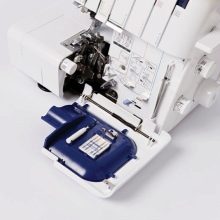
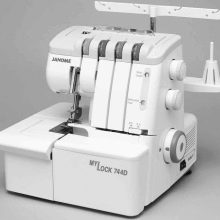

What it is?
The main function of an overlock is to overcast fabric and cut off excess areas of matter. This unit can be seen in any sewing studio. Coverlock is the same device, but has much more features. In the operation of the carpet, you can notice the features of the overlock and the sewing machine. This technique is used to work with any type of fabric. First, we will study the main similarities between overlock and carpet. First of all, this is the solution to the main problem - cutting processing and overcasting. Both devices do not have the shuttle mechanism characteristic of a classic sewing machine. Threading takes place in both devices through loopers.
These two devices are similar in the presence of a special knife, which serves to cut excess thread and to give the cut a more neat appearance. Both options can work with complex fabrics, all types of knitwear, materials for sewing bathing suits and other elastic varieties.
Both devices are also good at handling bulk materials, which include, for example, linen, tweed, and wool.
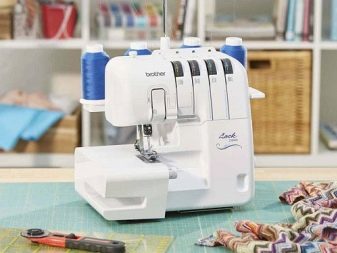
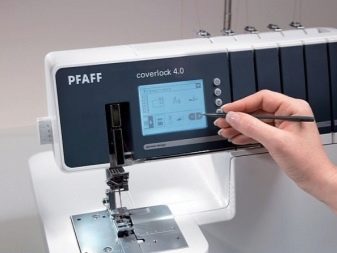
What is the difference?
So, now let's try to figure out how these two similar units differ. The differences are in the following criteria.
- Functions Overlock is designed for efficient overcasting, and the carpet, in addition to solving the same problem, is able to connect fabrics to each other, which is not characteristic of an overlock.
- Refill. At the beginning of work with overlock it is required to eliminate the previous threads and install new coils. In some models, this process occurs automatically. In the carpet, the thread replacement procedure is quite problematic, and you can not do without a careful study of the instructions.
- Complexity. Working with overlock is much easier than with overlock, since the first option is less functional, it has fewer additional lines. Overlock is able to perform several tasks, in its arsenal of more than 20 seams, including the most complex. Therefore, such an assembly requires more professional skills.
- Number of coils. The most common option for an overlock is a two-thread, and in general the number can reach up to 5. There are 5 coils and 10 in the carpet. Although, as practice shows, a three-thread version of the overlock is enough to work, and the need for the carpet is rare.
- The number of loopers. Overlock is equipped with two loopers, and carpet - three. This element, outwardly resembling a hook with an eye, serves to grip threads and perform complex chain stitches. Thus, a carpet with three loopers can perform more various manipulations.
- Equipment form. Pay attention to the appearance of the units. Overlock almost leaves no space from the inside of the foot, while the carpet has an extended pad of the length of the sleeve. This place is necessary for connecting parts.
- Maintainability. If the overlock breaks, the master can easily fix the malfunction. The more complex mechanism of the carpet will require more professional skills from the master, and not every specialist will cope with the task of fixing the carpet. Another difficulty during repair will arise in the search for suitable parts - spare parts for an overlock are much easier to find than for its “rival”.
- Weight. Overlock is slightly lighter than a carpet, so when using it at home, working with it will be simplified.
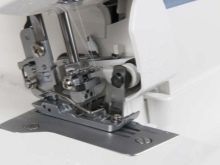
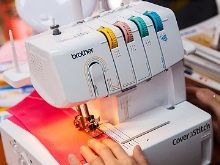
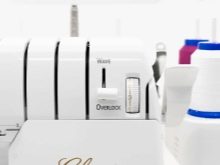
How to choose?
When wondering what is best to choose, one should take into account all the pros and cons of both devices. Overlock does an excellent job of marking products at a time, the same function is also available for the carpet, but in addition it performs a flashing method for processing knitted fabric - a flat seam. It copes with the finish of the neck. If the buyer chooses the machine exclusively for overlaying the slices, then there is no reason for him to overpay for the carpet - the work of one overlock is enough. If the future owner of the equipment often sews knitwear, then you should give preference to carpet.
If the choice fell on the carpet, then keep in mind that this is a rather expensive device, which, in addition, will require a lot of experience and not only in sewing, but also in handling a multifunctional machine. For example, when working with knitwear, the tailor will have to learn how to quickly switch speeds.
When choosing a carpet, think a few times if you need additional features, because even experts practically do not use them in the process of working with the carpet. Sometimes these extra options only complicate the process of setting up the device and operation.

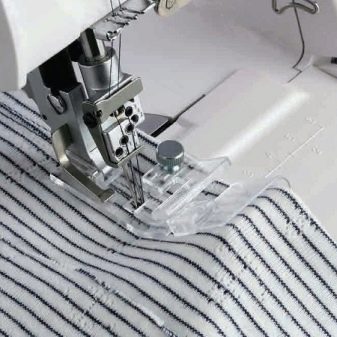
In general, it is impossible to unequivocally say which is better - a carpet or overlock, since it all depends on the needs of the buyer, his financial capabilities, experience and personal preferences. But in any case, when buying, it is important to make sure that the machine is fully operational, all components are in place, the instructions provide for working with the device in Russian.
The place of purchase is also important when buying. So, When ordering the unit via the Internet, use only the official websites of the manufacturers, as well as trusted online stores, which have a warranty period.If the purchase is planned in a stationary store, then choose specialized departments for the sale of sewing equipment for this - experienced sellers usually work here to help make the right choice. If the work on the typewriter will occur at home, then second-hand devices that can be selected on the classifieds website are quite suitable.
However, when meeting the seller and the equipment in person, bring someone with experience with sewing equipment to reduce the risk of buying a pig in a poke.
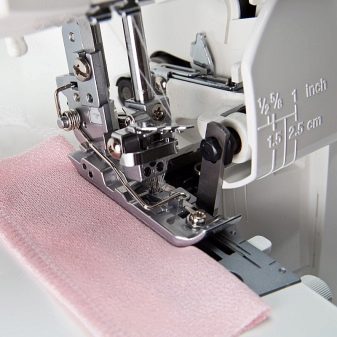

Difference from the sewing machine
There is another type of sewing machine called stitching. It is designed to work with knitwear. The “flashing” mechanism makes it possible to make a chain seam, a three-needle seam, a two-needle seam wide and narrow. Some novice tailors can be confused in all of these ways. All 3 cars are similar by the presence of a looper, which eliminates the need to use a bobbin. And the difference is as follows:
- the sewing machine has a rather long sleeve in comparison with the carpet and especially with the overlock;
- The “opener” has an extender and looper, which allows to make a flat open-loop stitch on knitwear (the same function is also characteristic of the carpet, but its overlock is deprived).

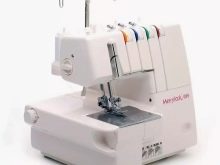
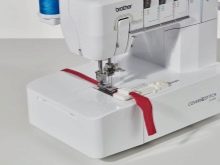
In this way, if you need 2 options when sewing - marking sections and processing knitwear, it makes no sense to buy two different devices - an overlock and a sewing machine, it’s better to save money and space in the room and buy a carpet, combining the functionality of two cars.
In addition, thanks to the ability of the carpet to perform chain seams, the buyer saves himself from buying a classic sewing machine.
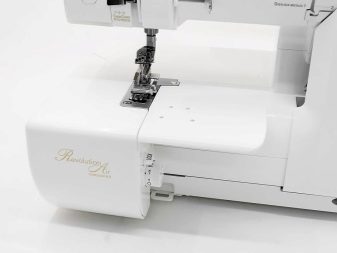
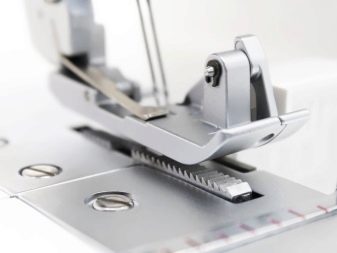
About what is better to buy, an overlock and a sewing machine or a carpet, see the next video.










